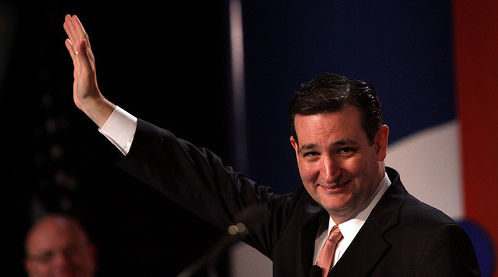
- The New Treasure Island for Investors
“This government’s [England] whole strategy for higher education is, in the cliché it so loves to use, to create a level playing field that will enable providers to compete on equal terms with public universities.” – Stefan Collini, “Sold Out,” London Review of Books
Published on http://www.truth-out.org
Stefan Collini’s review essay of two recent books on higher education in England (Roger Brown and Helen Carasso’s Everything for Sale, and Andrew McGettigan’s The Great University Gamble) begins with some unnerving facts regarding the “explosive growth of the for-profit sector” in US universities. It is the sort of preface that provides some relief to his compatriots as he proceeds to describe how higher education in England has become “a treasure island” for investment banks and private equity. At least, an English reader will think, the situation is not half as bad as in the United States.
So how far are we in the United States in turning higher education into a good return on investment?
Something called “Bridgepoint Education” boasted in 2008 of having 77,000 online students but also had “drop-out rates of 63 percent for bachelor’s degrees and 84 percent for associate degrees.” University of Phoenix, owned by the Apollo Group, reported 600,000 students and annual revenue over $4 billion with a dropout rate of 60 percent. The most appalling revelation was that after the Educational Management Corporation was taken over by Goldman Sachs, recruiters were told to find their applicants’ ” ‘pain’ so as to convince them that college might be a solution to their struggles.”
Public school “reform,” one concentrating on K-12, is what is exercising the American imaginary right now, “reform” here being closely tied to “family values,” state and federal control, teachers’ unions, taxes, the compulsory nature of K-12 in the United States, and parents’ fears that their children might be hampered in their race “to the top” by an unreformed public school system. Parental concern is an ubiquitous nerve that politicians can appeal to with the word “reform” and not worry about the furor that tax “reform,” health “reform,” entitlement “reform” or regulatory “reform” would occasion.
The word “reform” wouldn’t be magnetic if something indeed wasn’t rotten in the state of education in the United States, but what’s rotten may have more to do with issues other than a lack of market-driven competitiveness. Consider a staggering wealth divide and shrinkage of federal funds to education resulting from a federal budget sequestration capping spending. But the cultural temper has long been in line with a neoliberal drive to shrink the federal government by shrinking taxes. The American temper has also, in a very puzzling way, not been aroused by the wealth gap, pace the Occupy Wall Street movement. Both shrinking tax support and an almost feudal age division of needs and resources have, one could reasonably suggest, an eroding, putrefying effect on education.
If public institutions cannot rely on government funding because less tax revenues force less funding, then public institutions need to turn, as they have been doing, to student tuition and fees. The one who pays, now or later, is the student – who immediately becomes a comparison shopper amid an array of public and for-profit products and services. Such a market arrangement favors market-driven, for-profit enterprises because here they are in competitive buy-and-sell waters they know. The trick is to move the American cultural imaginary away from a sacrosanct John Henry Newman “idea of the university” to a Walmart world where nothing matters but price.
Waiting for Superman of “Reform”
In regard to public K-12 education, this sort of transformative path has found a hospitable terrain. Americans are already convinced that “reform” is needed and that the Superman for whom they are waiting comes clothed as new “alternative providers.” Some of these providers come clothed as nonprofit charters fighting for the right to feed at the public tax trough. But while public schools do not attract lavish philanthropy, the charters do. The Promise Academy of the Harlem Children’s Zone and the Knowledge is Power Program, for example, receive tax money as well as support from the Gates and Walton foundations. The Koch brothers are lobbying for charters through their lobbying group, the American Legislative Exchange Council (ALEC).
This public school “reform” seems to be the only issue upon which both Democrats and Republicans join in forging ahead. Bush proposed “No Child Left Behind” legislation, Obama has his “Race to the Top,” and all factions stand behind the “Common Core State Standards.” These rubrics resonate nobly. Nevertheless, it is difficult to see how the poor will not be left behind in a country that fails to point to the stochastic chaos of its economic system as the root cause of such poverty.
No doubt, the poorer you are in the United States, the more the schools in your neighborhood will also be poor and thus educate you poorly. If you are child of poverty, there is a far greater chance you will be left behind than that you will fulfill one of the rags-to-riches stories pulled out whenever the matter of poverty and success is aired. And there is great probability that you are destined to be left behind, regardless of how charismatic your third grade teacher may be.
No doubt, a race to the top will leave many at the bottom and few at the top, enacting in the adult world that childhood game of “King of the Mountain.” The game that produces such results should clearly be ended or at least amended, but this is not what we learn. Tests that show so many are failing have become a clear sign that the same chance-ruled game that has produced so many “losers” should now be applied to the means by which we hope to escape such a destiny, i.e., education. Enter now the “new, alternative providers,” the Supermen we have been waiting for.
No doubt, any summary of what every American needs to know to succeed in our zero-sum game of Winners and Losers will not be included in our “Common Core State Standards.” Beyond eliminating standards of critical thinking, our “Common Core” is skeptical of, or at best indifferent to, the idea that ideas matter simply because there are no ideas relevant to money making and there are no standards that have anything to do with making money beyond the standard that money making is a good, a summum bonum. That underlying reality of Market Rule – that success is detached from any rationality or methodology leading to it – places all value to results, to ends, not means. It is not how you play the game, fairly or rationally or morally, but whether you get a high score and win. We are here very far from Socrates’ words: “All men’s souls are immortal, but the souls of the righteous are immortal and divine.” This foundational unenlightenment is a necessary state of affairs because Market Rule is itself stochastic, casino-like, and therefore it is what fundamentally stands outside any educational mission that ideally directs young minds into discursive and nondiscursive ways of knowing the world.
A market-driven approach to education therefore is not concerned with core knowledge, or standards that deliver that core knowledge, but is only results oriented. But such testing becomes a convenient means to expose public education as in need of “reform.” This very approach is already reforming anyone’s sense of anything signifying beyond a competitive winning.
K-12 Sell-Out Comes to Universities
“[T]he only questions being asked about knowledge production, the purpose of education, the nature of politics, and our understanding of the future are determined largely by market forces.” – Henry Giroux, “Public Intellectuals Against the Neoliberal University,” Truthout
Think now of public colleges and universities standing in the wings as all this K-12 “reform” theater is going on and thinking, in some magical way, that they will escape the humiliation of it all. Public colleges and universities long dependent upon the government dole naively assume that the luster of tradition and honors they are clothed in will see them through, if such a wholescale “reform” campaign is directed at them. We cannot, however, blindly accept higher education’s sterling image of itself.
We cannot assume that the unenlightened standards of Market Rule are replacing enlightened standards or a universal core of knowledge and knowing, already in hand. What the value of higher education may be, beyond its usefulness in supplying market needs and pre-professional programs, seems to be increasingly difficult to define in a way that may answer, without scorn, the question: “How does it help us grow the economy?” These difficulties of defining “value” in higher education in our market-driven culture dissolve the mythos that higher education relies upon as a protective shield. But what seems nebulous, though grandiosely defined, cannot withstand the enveloping ambience in the United States, where all value is measured in terms of cost and profit.
President Obama, in response to the “start up” for-profit corporate rush to dig into the $150 billion dollars in federal financial aid to students, proposes a rating based on value received, a rating of which institutions give the student/consumer “more bang for the buck.” You can expect that a for-profit institution such as the University of Phoenix will convert its high dropout rate to a high graduation rate, leaving the question of “value of goods received” to an interminable debate. What the value of higher education is in a society that values “results” and not the getting there, where “winning isn’t everything; it’s the only thing?”
American universities have been ducking the unsettling conditions threatening their own self-image. Professors have long resisted unionization because they stand on the inviolability of their intellectual freedom, their own venerable charter to conduct a free exchange of ideas in the classroom. Students are here in these hallowed halls not as customers, clients, or consumers, but as inquiring and open young minds. Politicians, lobbyists, agitators and filmmakers cannot presume to lead a “reform” charge against these deep and venerable traditions and presumptions.
Nevertheless, in our millennial clime in which history’s accolades seem nothing more than “analogue,” and therefore passé and irrelevant in a new digital world, it appears probable that courses as apps on smartphones are more attractive than Mr. Chips at the blackboard.
Students are now consumers shopping for the best buy, in most cases for the best place to spend their government financial aid money, money that the “new alternative providers” will pass on to investors and shareholders in labyrinthine, opaque ways, as needed. The biggest players in the United States in for-profit higher education are Bridgeport Education Inc. and the Apollo Group, but in higher education as in K-12, those who declare themselves “nonprofit” bear closer examination. “McGettigan’s analysis,” Collini writes in his review of Andrew McGettigan’s The Great University Gamble, “demonstrates why it is important to analyze the corporate group structure, rather than simply accepting that, if the teaching institution itself is described as a not-for-profit charity, there can be no question of profits for private investors further along the line.”
What public universities put their faith in and stand upon, the millennial imaginary has overwritten, not in conscious rebuttal, but simply as a result of wandering in new and disassociated habits of time and mind. Whether old notions of higher learning can add to themselves an aura that respects its traditions and yet accommodates those who have no interest in or understanding in such is itself an academic question. I say this because academic committees are not determining change but rather the tide of change is propelling higher education.
“New Alternative Providers”
We see such change both in the role of student as well as in the cybertech innovation within which communication and learning go on. Public universities have no experience with consumers in contrast to the “new alternative providers,” who have all the experience that our US Wild West financial sector has given them. The transference from book to web site, from reading lengthy discursive writing to texting and tweeting, from sustained critical focus to a “multitasking” attentiveness are not unexpected or unwelcome events for the “new alternative providers.” The goal of consumer marketing higher education as e-commerce is a familiar market goal. Market Rule brought to higher education arrives without the baggage of traditions and expectations that millennials are also without. It is not difficult to see that the competitive advantage here is with “new alternative providers.”
“Reform” is not yet a word ubiquitously and daily applied to US higher education. And yet the same compelling rush of high-tech transformations, the same high-speed cyber forces that are rushing so many vestiges of an analogue “Dark Ages” into the dustbin of history are morphing higher education, at warp drive, into something new and not yet totally recognizable. So much of what universities have been in the United States – books and libraries, brick-and-mortar campuses and classrooms, professors and lectures – are destined for cyberspace relocation, like the last furnishings in a condemned building.
An ever-accelerating and expanding rush of computer networking and social media held in hand and accessed at will have broken through the sacred chambers of higher education. Every lecturer in every classroom now faces a student whose attentiveness is in need of constant “refreshing.” This student welcomes the advance and improvement of the new online and for-profit higher education in the same way we have learned to accept the old as retrogression and the new as progress, in the same way we bond to the new when we have no recollection or interest in what was before.
A subject revealed through the length of a course under the control of a professorial voice and direction in a classroom on a campus seems now more than ever to be not at the heart of learning itself but impedimenta, accessories, delivery systems of a particular time and place. The market viability of universities has depended upon delivering what students cannot possess on their own, on locating the delivering of that service to a resident faculty adept in time-honored methods of teaching, and on attaching graduation to the fulfillment of a curriculum delivered in a university setting. All that now stands as a diminished marketing enterprise as the market itself ranges into the new profit-making frontiers that cybertech offers. There are shades of Luther’s Reformation here as Christianity suddenly finds that the heart of a New Testament message did not require the impedimenta of Pope or Catholic cannon.
A New World of Knowing
Cybertech privatizes and personalizes all that has been public and social. We are experiencing individually and culturally a drawing inward to the self as online access replaces worldly experience, as we shape a self-designed analogue of the world on cellphones and cyberspace. Older notions of what “social” means give way, including the social enterprise of education, which fades as the individual is liberated into a new world of knowing.
Higher education in the United States has already conceded to the sense and logic, the justice and humanity of Market Rule and thus has failed to critique that Rule, which is now uploading it and dealing with it as one of many online choices. Some appraisal of conditions surrounding education in the United States was, and is, prerequisite to any critique. What are the difficulties of educating the young to fit into a society where the minimum wage, adjusted for inflation, was $2 higher in 1968 than it is now, where income of the top 1% has gone up 20 percent, whereas income of 99% has gone up 1 percent, where 400 individuals have as much wealth as the bottom 180 million? What sort of education can proceed when a crippling level of ignorance is not addressed? For instance, only 42 percent of Americans believe that inequality has increased in the past 10 years, although this inequality has undermined public education’s claim to defend democracy from oligarchic rule. The fact that American democracy has been devolving into oligarchy seems not to have been a matter serious enough to address in the classroom.
The mission of US higher education has been a mission that a collaborationist would follow. Public universities’ failure to take on the many serious challenges to the well-being of democracy as well as of their students has many explanations. The same question can be put to liberal politicians. The most obvious answer is that since Reagan, the inclination of the American cultural imaginary has been toward letting markets rule. That game has made a minority very wealthy, and that wealth has greatly influenced our politics. But higher education was affected somewhat earlier by a conservative reaction to the ’60s. That conservative reaction engaged in a purging of “radical” and experimental movements in higher education initiated during the American countercultural period. The view that “everything was political” was in essence a view that challenged the idea of a neutral presentation of any topic. What were the conditions within which any discussion took place? Up until then, it was not difficult for academe to use the pretense of a neutral, objective and disinterested approach to all issues as a screen to hide behind, to, in short, ignore the effects Market Rule had on which subjects and courses of study were valuable and what was to be valued in a free democracy. Once the radicalism of counter-cultural influences on higher education was eliminated, mostly by eliminating the classroom practitioners as well as the like-minded administrators, the political and economic surround could once again be ignored in the name of a disinterested and unbiased pursuit of “Truth.”
Instead of enabling students to develop a corrective to a devastating and corrupting Market Rule, higher education has set itself up for a takeover of those market values. What higher education in the United States faces now is its reward for failing to lead its students away from what Carlyle called “the cash nexus” of human relationships. The rewards of higher education in the United States are to be reaped by investors who see it as the new Treasure Island as well as by those students who observe and learn the message in that.
I could not describe this relentless passage to the rule of a market mentality, which is not a mentality at all but a resurrection of Fortuna, the goddess of Chance, if it were not already on public display. There is also a defense blocking that rule underway in various guises, from the “We’ve Had Enough!” worldwide protests of OWS to the 2010 student protests in the United Kingdom, and the Free Cooper Union Movement. Jeff Bryant’s “Education Spring: A Growing Revolt Against ‘Reform’ Mandates,” Truthout, May 2013, points out where in the US the word “reform” is viewed with distrust. I am not alone in realizing – as Solzhenitsyn remarked – that the “name of ‘reform’ simply covers what is latently a process of the theft of the national heritage.” And surely awareness and defense will lead to a renewed effort toward a university’s active stand against Market loyalty to the perverse logic of “Creative Destruction,” extended most dangerously to critical and creative thinking outside the box of profit. “Universities,” Henry Giroux writes, “should be subversive in a healthy society, they should push against the grain and give voice to the voiceless, the unmentionable and the whispers of truth that haunt the apostles of unchecked power and wealth.”














